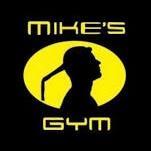-
Topics
-
Posts
-
As a beginner, I’ve found this forum invaluable. I doubt I would’ve persevered without its support. I’ve had the confidence to attempt things that seemed to me impossible only because I knew there were patient and giving folks gathered around this watering hole, available to share their skill. I would very much like to know where to go if this one dries up and everyone needs to decamp. There’s something special about the folks gathered in this group. How to keep in touch?
-
By eccentric59 · Posted
After a 3-week work fiasco that took up 137% of my time, I was finally able to get back to restoring a G. Boley 8mm lathe I picked up on eBay. I still need to do a bit of polishing on the tailstock but it works very nicely. Before and after pictures below. In any case, when I was reassembling the motor I wasn't quite sure which side the pully attached to, or if it matters. My question is ... does it matter? The listing photo below shows it the reverse of how I have it now, but it seemed that the cord and the reversing lever(s) should be on the right away from the belt. -
Thanks Richard. That’s clear. So - another question - how much latitude is there in barrel and spring sizing? Say I have have measured the ID of my barrel to be 9mm and (all other mainspring specs being equal), the closest match I can find for a replacement mainspring is listed with an 8.5mm barrel size, is it acceptable to fit the smaller spring in to the slightly larger barrel without compromising anything functionally? I’m in this situation now with an AS 1686 which has a 9mm barrel, but the closest replacement I can find has an 8.5mm diameter listed in its specs. I can find an alternative 9mm spring, but would have to accept a different thickness. I’m unsure how much wriggle room is acceptable, or whether in mainspring sizing, there’s a priority - ie thickness over barrel size etc. Thanks again for any info. Cheers, John
-
We already have a Facebook group run by Mark , so this is a bit moot. Search for “Watch repair lessons” group. Tom
-
@dibs1 Hopefully you see this and post an update. @Knebo Would you happen to know what is the end-shake tolerance for a cal 15xx rotor or is there such a metric? Also, is there a specified height of the rotor? I got the watch serviced which addressed the rotor grinding against the base plate and case back (i have checked by moving the watch in a circular motion to spin the rotor and have tested it dial up and down) however whenever the watch is shaken lightly the rotor touches the caseback and makes a ding. What is unusual is that is only happens when the rotor is resting at the 9'o clock position. The axle was replaced and reading around it seems that spring clip, jewel and axel are the three parts that individually or together are causing this issue.
-






